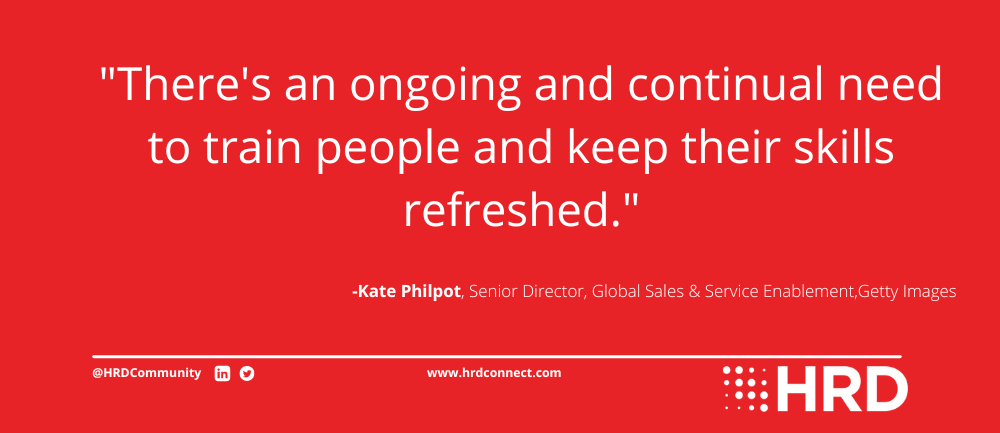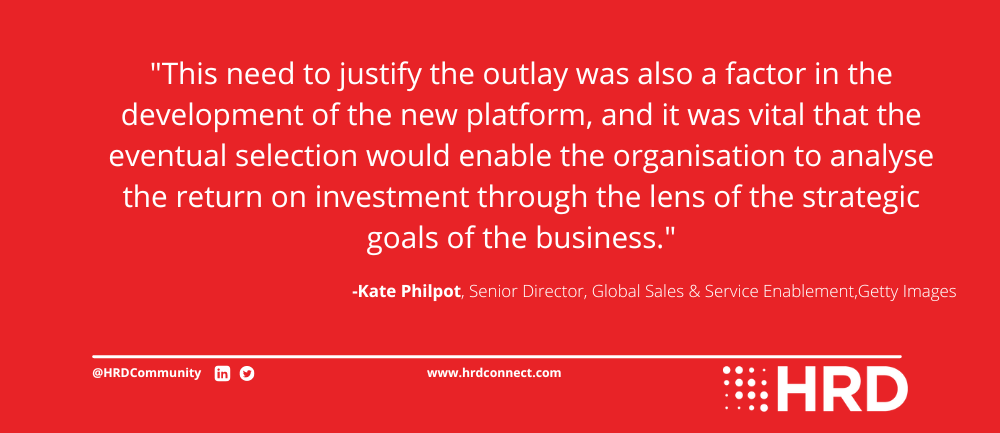-
Provided by

- Date published: Sep 27, 2022
- Categories
In our fast-paced world, there is a growing need for organizations to become learning organizations. We’ve seen the first generation of learning organisations emerge through the continuous improvement movement pioneered by W. Edwards Deming, with things like quality circles and kaizen spreading rapidly throughout the manufacturing world.
The second-generation learning organization then tried to overcome the so-called innovator’s dilemma, which sees companies broadsided by new entrants emerging out of left field, by ensuring that they are able to experiment with new things while also maintaining their strength in their current market.
With the global and complex nature of many businesses today, the third-generation of learning organization aims to rapidly increase the rate at which information is absorbed and assumptions are tested. It’s an aspiration that many organizations have, but research from Deloitte shows that many still have a long way to go before the vision is realized.
“Organisations are [slowly] now beginning to understand the scale and the massive implications for job design, reskilling, and work re-invention involved in integrating people and automation more extensively across the workforce,” the report says.

Adapting to the modern world
This desire to ensure people are provided with the skills they need to thrive in a fast-paced world underpinned the development of a new learning and engagement platform at the visual content creator and marketplace Getty Images.
“There’s an ongoing and continual need to train people and keep their skills refreshed,” Kate Philpot, Senior Director, Global Sales & Service Enablement at Getty Images, says. “Not only is the outside world and wider market changing rapidly but also our own products are evolving to meet customer needs, so we must ensure our employees are serving up the right information when they speak to them.”
Previous attempts had been made to support employees across the business, but concerns persisted that the technology was neither sufficiently flexible nor equipped to allow the acquisition of learning to be tested. The platform also lacked features to encourage user engagement, which undermined efforts to get employees to commit to learning and development, and with an inadequate back end, the project team spent an excessive amount of time bootstrapping reports and metrics. It was clear that a change was needed if Getty Images were to become a true learning organisation.

Active learning
Because of the complex way in which employees both work and learn, the new platform structure is based upon the so-called “learning pyramid”. This suggests that traditional methods of learning, such as lectures and reading alone, are insufficient to drive retention, and that a more varied approach that incorporates demonstration, discussion, and practice is required to truly absorb information. Indeed, the learning pyramid suggests that the best way to learn something new is to teach it to someone else. It features a general shift away from passive learning to more active learning whereby employees are doing rather than consuming.
“We really want to provide learning via multiple avenues,” Philpot explains. “Selling and customer service are practical activities so, sometimes you might read documents, other times you might discuss examples of best practice, or you might engage in roleplay type scenarios that allow you to both see and practice particular approaches.”
By providing a robust means of tracking precisely what employees have learned, and how they have learned it, the new learning and engagement platform promises to make the very art of learning itself into a process that evolves based upon the direct and indirect feedback from users.
A partnership approach
The new platform was developed in partnership with US-based learning management software company WorkRamp. To ensure smooth delivery of the platform, the project team spent a lot of time speaking with stakeholders to understand their priorities and get their input on the project.
“We spent a lot of time talking to our IT team, our legal colleagues, the purchasing team, and end users, in order to learn what their decision-making criteria were as well as their current and future workload,” Philpot explains. “By investing time at the outset to understand the needs and also the capacity across a big team, it really helped us to deliver a smooth transition from one platform to the other.”
Aside from the widespread stakeholder engagement, it was also crucial to select a partner that promised to be accessible and responsive, especially given the rapid pace of change in both the sector and in the needs of learners. As well as creating an engaging platform for employees, they also wanted a backend that would allow subject matter experts to easily upload content and also managers to create or access reports on the learning outcomes of their team.
“One of the first things we did was to create a Guide (WorkRamp’s term for a training module) to the platform and enrolled everyone so that people immediately got what the platform offers and could engage with the new functionality like the quizzes and matching games,” Philpot explains. “Alongside this, we also developed a Guide for content creators, as we knew that to scale adoption of the platform we had to make it as easy to access as possible.”
So now, if managers or employees want to produce a training programme for their team, they have both the platform and the support to allow them to build content, put their team through the training, and then get reliable and robust data on how they performed in the training. This analytics backend also helps managers ensure that their team is keeping up to date with their learning and development requirements.
“The new platform allows every manager of a team to go to a dashboard, which lists all of the members of that team, their enrolments, those completed and those outstanding,” Philpot explains. “At the click of a button, the manager can then send an email to remind those with enrolments outstanding and help them on their way.”
Showing return on investment
This focus on metrics and analytics feeds through to the ability to prove the return on investment of the platform, and of learning and development more generally. This has long been the holy grail of L&D professionals, but with cost pressures felt across the economy it’s increasingly important that substantial investments can be justified.
While the CIPD’s Learning and Skills at Work report highlights that a growing number of organizations are striving to determine the ROI of their investment in skills, most of these efforts get stuck measuring somewhat esoteric metrics, such as satisfaction. Indeed, they highlight that just 14% of organizations are using measures that are directly linked to business strategy.
This need to justify the outlay was also a factor in the development of the new platform, and it was vital that the eventual selection would enable the organization to analyze the return on investment through the lens of the strategic goals of the business. For instance, it’s one thing to say that thousands of training modules have been completed, but the aim is to be able to translate these raw stats into a commercial impact for the organization.
“Our previous platform didn’t have any functionality to allow us to interrogate the return on investment, whereas the new platform does and we’re now able to visibly track training completion among employees,” Philpot explains. “Because completion includes an assessment of the capability of each employee, we can start to look at how that translates into their performance at work.
Previously, it would have been very difficult to assess what people know, which in turn makes it impossible to know what skills and/or knowledge are being deployed at work. With the new platform, it’s much easier to see a clear link between the skills people have (or are developing) and their performance. This provides a direct connection between the learning they undertake and the revenue they’re able to generate for the business.

Embedding learning into the business
Ultimately, the aim is to create a true learning culture in which employees aren’t passive recipients of learning from an external source, but are instead actively engaged in their own learning and development, and that of their colleagues.
The early results suggest that the platform is creating significant engagement among employees. It has been live since March 2022 and has already had 238 pieces of new learning content created, including 134 individual training modules and 38 knowledge tests. In total, the 1,800 or so employees have completed nearly 12,000 training modules, suggesting a high level of engagement with the platform.
The project is at an early stage at the moment, but there are ambitious plans to begin embedding learning into various aspects of the business. For instance, under consideration is an annual certification process for sales staff to show that they not only have strong sales skills but also fully up-to-date knowledge of the company and its latest products.
Ultimately, commitment to learning could also feed through into things like pay and promotion, as the project is underpinned by the leadership principles of the organization, including a growth mindset, a commitment to the organization, and a desire to learn every day.
“When we have people who are proactively coming to us and saying, “I’d like to create a Guide on this topic”, then that’s exactly the kind of “going the extra mile behavior” that would be recognized,” Philpot explains.
Einstein famously remarked that the key is to provide the conditions in which people can effectively learn. If businesses are to become learning organizations then it’s vital that the conditions are provided that enable that. Getty Images is at the early stages of its journey, but it’s an endpoint they’re confident of reaching.
